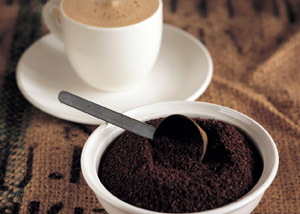Panamanian coffee bean origin Panamanian coffee bean
The Republic of Panama (Panama) is the southernmost country in Central America. The Panama Canal, which connects the Atlantic Ocean and the Pacific Ocean, is located in the center of the country and has an important strategic position. It sits on the Panama Canal, a world-famous shipping artery. On December 31, 1999, the United States returned all land, buildings, infrastructure, and management of the Panama Canal to Panama. Because of its important geographical location, Panama's economy focuses on services, mainly finance, trade and tourism. Because Panama's establishment and trade have important relations with the United States, Panama began to use the US dollar as a currency in circulation since 1907. The national currency is Balboa, which is equivalent to the US dollar and used in its territory at the same time. It is the first country in the world to use the US dollar as legal tender outside the United States. Panama City, the capital. The Panama Canal runs through the central part of the country and is the dividing line between South and North America. The financial industry and entrepot trade are developed and occupy an important position in the economy.
Panama-History
In January 2004, the Panamanian Heroes Monument was unveiled to commemorate the students killed by U.S. military police 40 years ago for flying the Panamanian flag in the Yunhe District.
In January 2004, the Panamanian Heroes Monument was unveiled to commemorate the students killed by U.S. military police 40 years ago for flying the Panamanian flag in the Yunhe District. [2]Atlas
Panama was colonized by Spain in the early 16th century, and until 1821 it was one of the Spanish colonies in America.
Panama joined the Greater Republic of Colombia founded by Simon Bolivar in 1821. In 1830, the Confederation split and Panama became a province of Colombia.
At the turn of the 19th and 20th centuries, the Frenchman Ferdinand de Lesseps began building a canal connecting the Atlantic and Pacific oceans. President Theodore Roosevelt used diplomacy to try to take over the canal.
In November 1903, the United States instigated Pakistan to secede from Colombia and establish the Republic of Panama. On November 18, the United States and Pakistan signed the Panama Canal Treaty. The United States obtained the right to "permanently use, occupy and control the Panama Canal." Subsequently, it controlled the administration, justice, police, railways and finance of the Yunhe District, making the Yunhe District a veritable "country within a country." The treaty remained the subject of diplomatic wrangling between the two countries until 1977, when the United States agreed to return control of the canal to Panama in 1999.
General Omar Torrijos came to power in 1968 and was the de facto ruler of Panamanian politics until his death in an air crash. After Torrijos died, Manuel Noriega assumed power.
On September 7, 1977, the governments of the United States and Panama signed a new treaty on the Panama Canal. The new treaty stipulates that the United States will gradually return full sovereignty and jurisdiction over the Canal and Yunhe District to Panama by the end of 1999.
In the May 1989 presidential election, Guillermo Endara won the election, but Noriega declared the election invalid. In September of the same year, the United States imposed economic sanctions on Pakistan. In December 1989, a U.S. Marine was killed and the United States invaded Panama to protect the safety of American residents. On December 15, Noriega declared a state of war with the United States and became head of state.
On December 20, 27,000 U.S. troops launched a military operation against Panama to overthrow Noriega's regime and Ndara became president. Noriega escaped to the Vatican embassy and surrendered to the U.S. military on January 3, 1990. He was immediately transported to Florida, charged and imprisoned. About 2,000 people were killed in the U.S. invasion, including Panamanian soldiers and civilians.

Important Notice :
前街咖啡 FrontStreet Coffee has moved to new addredd:
FrontStreet Coffee Address: 315,Donghua East Road,GuangZhou
Tel:020 38364473
- Prev

Coffee knowledge Coffee Origin what is the special taste of coffee
The taste of coffee is mainly roasted to different degrees of mocha smoothie: iced coffee (one person) Vanilla Ice Cream three tablespoons. Crushed ice appropriate amount of foamed cream appropriate preparation method (one person) put the right amount of ice into the juicer, then pour sugar-free iced coffee into about 2 tablespoons chocolate syrup and then add Vanilla Ice Cream to increase the sweet flavor.
- Next

History and culture of Colombian coffee the development of Colombian coffee
In the early 1960s, coffee production was about 600kg per hectare. Now it has risen to about 900kg, and some farms can reach 2500 kg. However, quality assurance is a top priority for the coffee industry. Colombia established the National Coffee Management Association (Federacion Nacional de Cafeteros, or FNC) in 1927, which is responsible for quality supervision. Although the association is a private company
Related
- Guji coffee producing area of Guji, Ethiopia: Humbela, Shakiso, Wulaga
- What is the most expensive variety of Qiloso in BOP multi-variety group?
- How to store the coffee beans bought home?
- Why are Yemeni coffee beans so rare now?
- Ethiopian Sidamo all Red Fruit Sun Sun Santa Vini Coffee beans
- SOE is mostly sour? What does it mean? Is it a single bean? what's the difference between it and Italian blending?
- Is Italian coffee beans suitable for making hand-brewed coffee?
- How to choose coffee beans when making cold coffee? What kind of coffee beans are suitable for making cold coffee?
- Just entered the pit to make coffee, what kind of coffee beans should be chosen?
- Can only Japan buy real Blue Mountain Coffee? What are authentic Jamaican Blue Mountain coffee beans?

